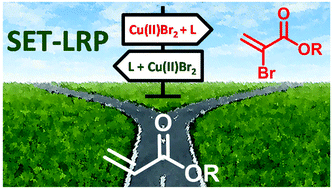Highly reactive α-bromoacrylate monomers and Michael acceptors obtained by Cu(ii)Br2-dibromination of acrylates and instantaneous E2 by a ligand†
Abstract
Depending on the order of their addition to the reaction mixture, acrylates can undergo SET-LRP or dibromination by Cu(II)Br2 and spontaneously dehydrohalogenate to provide the corresponding highly reactive α-bromoacrylate monomer and Michael acceptor.

- This article is part of the themed collection: Frontiers in Supramolecular and Macromolecular Science symposia


 Please wait while we load your content...
Please wait while we load your content...
